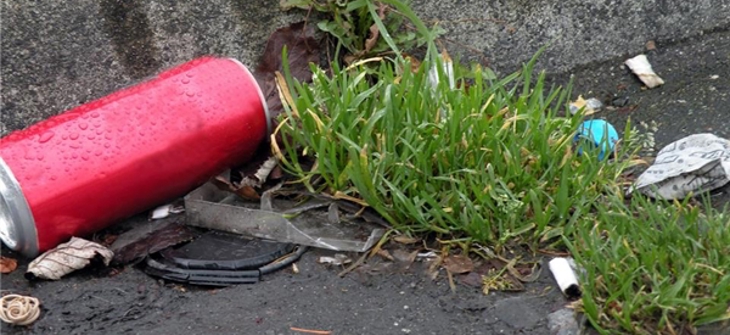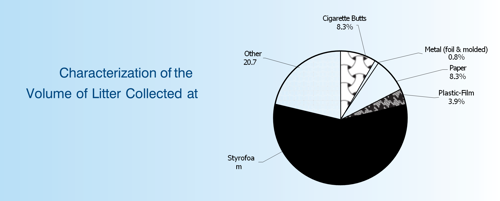
What Kind of Trash and Debris is in Stormwater Runoff?
Characterizing Solid Pollutants in Urban Stormwater Runoff
We all know that stormwater runoff carries trash and debris into our waterways, but have you ever wondered what kind of material this runoff picks up?
A Contech Continuous Deflective Separation unit (CDS) was installed on a site in California, and its performance was monitored over 12 months. During a maintenance event, the trash and debris captured by the CDS were removed, and the contents were separated and characterized. The graph below shows the composition of trash and debris removed from the CDS unit and the percentage of each category of litter to the entire volume.

The results from this study are revealing and help to quantify the types of trash that are too often improperly discarded. This study also shows just how important the work is that stormwater regulators, engineers, BMP manufacturers, and others are doing to protect our waterways. While food and beverage containers make up the majority of the trash that was collected in the CDS unit, it was surprising to see that over eight percent of the trash volume was cigarette butts. Cigarette butt waste has long been an environmental issue with a significant global impact. The litter is both unsightly and harmful to marine life. It’s important to not only target the large trash and debris but use controls that also target the smaller litter, such as cigarette butts.
Our nation has some of the world’s most beautiful beaches and waterways, but with no trash control, litter discarded on land will make its way into streams, creeks, rivers, and eventually the ocean as storms wash it into gutters and drains. This trash not only detracts from the aesthetics of waterways but also poses a threat to marine life and public health. It can also clog conveyance systems and outlet control structures leading to upstream flooding.
The problem of trash in stormwater runoff isn’t going away. The question is what are we going to do about it? The answer lies in trash control strategies that include both source control and structural control, but that’s a separate blog article; more on that later.
